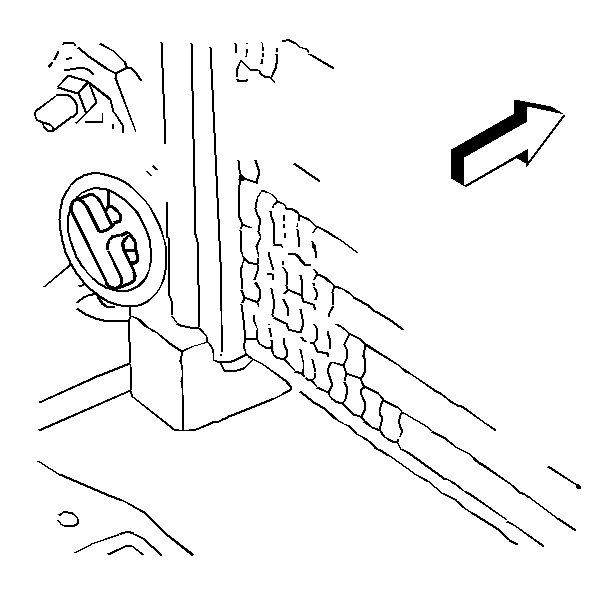Draining Procedure
Caution: As long as there is pressure in the cooling system, the temperature
can be considerably higher than the boiling temperature of the solution in
the radiator without causing the solution to boil. Removal of the pressure
cap while the engine is hot and pressure is high will cause the solution
to boil instantaneously -- possibly with explosive force -- spewing
the solution over the engine, fenders and the person removing the cap.
Caution: An electric fan under the hood can start up even when the engine is
not running and can injure you. Keep hands, clothing and tools away from any
underhood electric fan.

- Completely drain the cooling
system by opening the radiator drain cock at the bottom of the radiator.
- If the coolant is dirty, or if there are deposits in the radiator,
flush the cooling system before refilling. Refer to
Flushing
.
- Remove the radiator pressure cap.
| 3.3. | If necessary, replace the cap. |
| 3.4. | Clean the radiator filler neck. Inspect the filler neck. |
- Disconnect the hose from the coolant recovery reservoir. Remove
the reservoir. Refer to
Coolant Recovery Reservoir Replacement
.
| 4.1. | Clean the outside of the coolant recovery reservoir. |
| 4.3. | Thoroughly clean the inside of the reservoir using soap and water. |
| 4.4. | Thoroughly flush the reservoir with clean water. Drain the reservoir. |
- Install the reservoir. Connect the reservoir hose. Refer to
Coolant Recovery Reservoir Replacement
.
Filling Procedure
Notice: Do not add cold water to the cooling system with the engine at or above
operating temperature. Adding cold water causes rapid cooling, resulting in
possible engine damage.
NOTICE: When adding coolant, it is important that you use GM Goodwrench DEX-COOL®
or HAVOLINE® DEX-COOL® coolant. If Coolant other than DEX-COOL®
or HAVOLINE® DEX-COOL® is added to the system the engine coolant will
require change sooner; at 50 000 km (30,000 mi)
or 24 months.
Notice: Do not use a solution stronger than 70 percent antifreeze. Pure antifreeze
can freeze at -22°C (-8°F).
- Refill the cooling system with GM Goodwrench® DEX-COOL®
or Havoline® DEX-COOL®. To ensure sufficient engine cooling, freezing
and corrosion protection, maintain the protection level at -37°C
(-34°F) lower. Use a solution that is no more than 70 percent
antifreeze.
- Place the heater and A/C control in any A/C mode except Max and
the temperature in the highest setting.
- Allow the engine to continue idling until the lower radiator to
coolant pump hose is hot.
- Cycle the engine speed up to about 3000 rpm and back to idle five
times. Slowly open the bleed valve on the rear of the thermostat housing for
approximately 15 seconds to expel any trapped air in the cooling system.
- After the air has been expelled, fill the radiator. Install the
radiator pressure cap, making sure the arrows on the cap line up with the
coolant recovery tube.
- Allow the engine to cool to outside temperature. Check the coolant
level in the reservoir.

